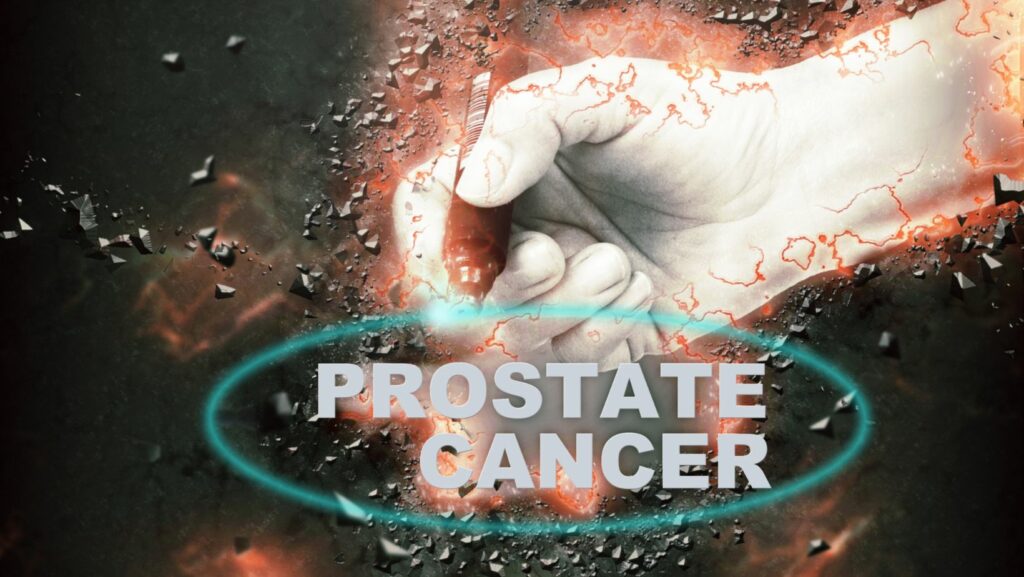
Prostate cancer is a prevalent health concern among men worldwide. Understanding its symptoms, causes, and treatment options is crucial for early detection and effective management. By being aware of the signs to look out for and the risk factors associated with this disease, individuals can take proactive steps towards their health.
In this article, we delve into the complexities of prostate cancer, shedding light on the various symptoms that may indicate its presence, the underlying causes that contribute to its development, and the diverse treatment approaches available. With a focus on education and awareness, readers can empower themselves with the knowledge needed to navigate the journey of prostate cancer diagnosis and treatment.
Understanding Prostate Cancer: An Overview
Symptoms of Prostate Cancer
Prostate cancer often exhibits subtle or no symptoms in its early stages, making regular screenings crucial for detection. However, as the disease progresses, individuals may experience symptoms such as frequent urination, especially at night, blood in urine, discomfort in the pelvic area, and erectile dysfunction. Recognizing these signs early can lead to timely interventions.
Causes of Prostate Cancer
The exact cause of prostate cancer remains unknown. However, it is believed to result from a combination of genetic, environmental, and lifestyle factors. Mutations in the DNA of prostate cells can lead to uncontrolled cell growth, forming tumors. Aging, family history, and certain genetic changes are factors that may contribute to the development of prostate cancer.
Risk Factors for Prostate Cancer
Several risk factors increase the likelihood of developing prostate cancer. Age is a significant risk factor, with the disease being more prevalent in older men. Family history plays a role, as individuals with close relatives who have had prostate cancer are at higher risk. Race also influences risk, with African American individuals having a higher incidence of prostate cancer. Other factors such as diet high in red meat and low in fruits and vegetables, obesity, and smoking may also elevate the risk of developing prostate cancer.
Diagnosis of Prostate Cancer
Building on the understanding of prostate cancer symptoms and causes, diagnosing the condition is crucial for timely intervention and treatment planning. Early detection can significantly impact treatment outcomes and prognosis. Here are key aspects of diagnosing prostate cancer:
Screening Tests and Procedures
Screening for prostate cancer typically involves a prostate-specific antigen (PSA) test. This blood test measures the levels of PSA, a protein produced by the prostate gland. Elevated PSA levels may indicate the presence of prostate cancer, though further investigation is needed for a definitive diagnosis. The PSA test, when combined with a digital rectal exam (DRE), provides a more comprehensive assessment. It’s important to note that an elevated PSA level does not always indicate cancer and may result from other non-cancerous conditions.
The Role of Biopsies in Diagnosing Prostate Cancer
A biopsy is often needed to confirm a prostate cancer diagnosis. During a biopsy, a small sample of prostate tissue is taken and examined under a microscope for the presence of cancer cells. A biopsy is considered the gold standard for diagnosing prostate cancer and determining its aggressiveness. It helps in establishing the grade of the cancer, which guides treatment decisions.

Additionally, biopsies can provide information about the extent of cancer within the prostate gland, aiding in staging the disease and planning appropriate prostate cancer treatment strategies.
Treatment Options for Prostate Cancer
Standard Treatments and Emerging Therapies
Prostate cancer treatment options vary depending on the stage of the cancer, overall health of the patient, and individual preferences. Common standard treatments include surgery, radiation therapy, hormone therapy, chemotherapy, and immunotherapy.
- Surgery: Surgical procedures like radical prostatectomy involve removing the prostate gland and surrounding tissue. It’s often recommended for early-stage prostate cancer to eliminate the tumor.
- Radiation Therapy: This treatment uses high-energy rays to target and kill cancer cells. It can be external beam radiation or brachytherapy, where radioactive seeds are placed inside the prostate.
- Hormone Therapy: Also known as androgen deprivation therapy, this approach aims to reduce the levels of male hormones (androgens) that fuel cancer growth.
- Chemotherapy: While not commonly used for prostate cancer, it may be recommended for advanced cases that don’t respond to other treatments.
- Immunotherapy: This newer treatment option uses the body’s immune system to identify and attack cancer cells. It’s an emerging therapy showing promising results in certain cases.
Emerging therapies like targeted therapy and focal therapy are also being explored to provide more precise and effective treatments with fewer side effects. Clinical trials are ongoing to assess the safety and efficacy of these innovative approaches. Incorporating engagement solutions into clinical trial recruitment can significantly enhance this process by quickly connecting researchers with the right individuals for specific studies. Additionally, this approach facilitates the collection of real-world data, offering valuable insights into how treatments perform in everyday life.
The Importance of Personalized Treatment Plans
Developing a personalized treatment plan for prostate cancer is crucial to ensure the best possible outcome tailored to the individual patient. Personalized plans consider factors such as the stage and aggressiveness of the cancer, overall health status, age, and personal preferences.
Through personalized treatment plans, patients with prostate cancer can receive targeted therapies that address their specific needs, leading to improved outcomes and better quality of life during and after treatment. It’s essential for patients to discuss their preferences and concerns with their healthcare team to collaboratively create a treatment strategy that aligns with their goals and values.
Living with Prostate Cancer
Managing Symptoms and Side Effects
Living with prostate cancer can present various challenges due to the symptoms and side effects of both the disease and its treatments. Patients may experience symptoms such as frequent urination, blood in the urine, erectile dysfunction, and bone pain. Managing these symptoms is crucial to improving the quality of life for individuals undergoing prostate cancer treatment.

To address urinary symptoms, healthcare providers may recommend medications to relax the muscles of the bladder or procedures to reduce prostate size. Erectile dysfunction can be managed with medications, vacuum erection devices, or implants. For bone pain, treatments like pain medications, radiation therapy, or bone-strengthening medications may be prescribed.
The Impact on Mental and Emotional Health
In addition to physical symptoms and side effects, prostate cancer can also have a significant impact on mental and emotional health. Patients may experience feelings of anxiety, depression, fear, and uncertainty after a prostate cancer diagnosis. Coping with the emotional stress of the disease is essential for maintaining a positive outlook and quality of life.
Support groups, counseling, and therapy can provide emotional support and guidance for individuals navigating the challenges of living with prostate cancer. Open communication with healthcare providers, caregivers, and loved ones is key to addressing emotional needs and ensuring holistic care for patients.
Conclusion
Understanding prostate cancer symptoms, causes, and treatment is crucial for early detection and effective management. By recognizing the signs and risk factors, individuals can take proactive steps towards diagnosis and personalized treatment plans. From traditional therapies like surgery and radiation to innovative approaches such as immunotherapy and targeted therapy, the landscape of prostate cancer treatment continues to evolve. Managing symptoms and side effects, along with prioritizing mental and emotional well-being, are integral parts of the journey. With advancements in medical research and a holistic approach to care, individuals can navigate the challenges of prostate cancer with resilience and support. Stay informed, seek guidance from healthcare professionals, and empower yourself in the fight against prostate cancer.












